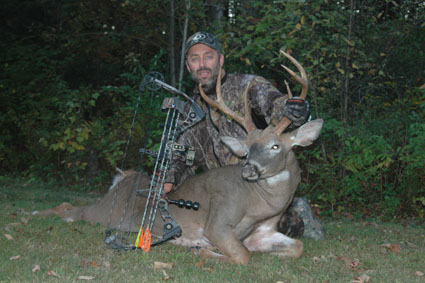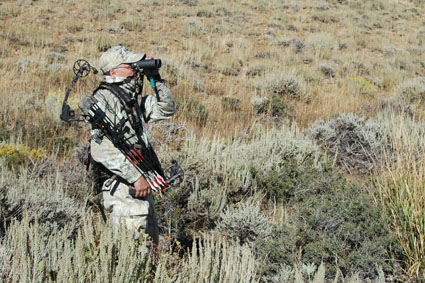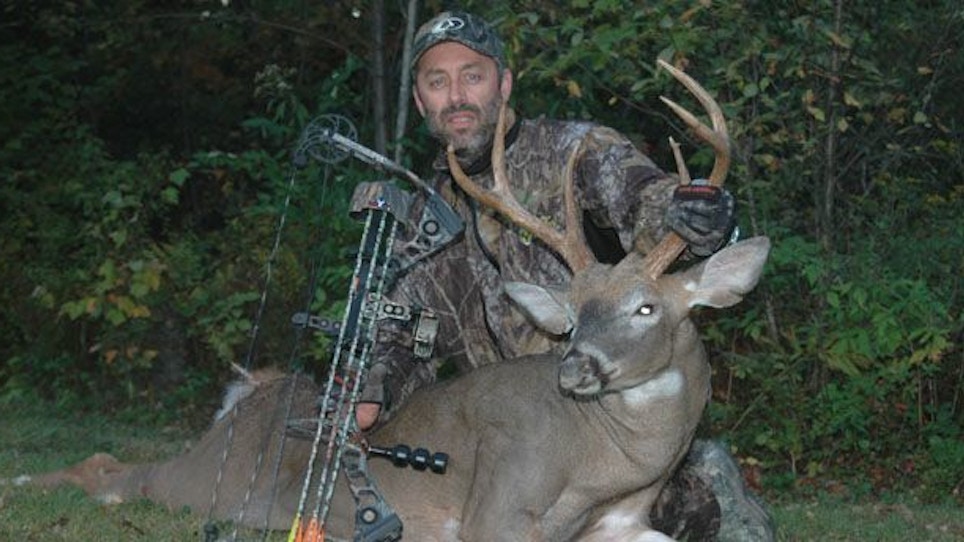 Today’s deer hunters are fortunate to have great amounts of detailed and often very useful information on deer behavior and hunting techniques available to them through books, magazines, videos and television. However, the vast majority of the how-to advice is based on hunting Midwestern farmland whitetails. There’s a good reason — that’s where most of the deer, the big bucks and those who pursue them live. But whitetails and whitetail hunters occupy a much broader and more diverse range of habitats. And while some of the pro tips generated in the nation’s whitetail breadbasket are applicable elsewhere, many of these outside areas require a different set of tools. What follows are some general guidelines for bowhunting some of the more common habitat variants.
Today’s deer hunters are fortunate to have great amounts of detailed and often very useful information on deer behavior and hunting techniques available to them through books, magazines, videos and television. However, the vast majority of the how-to advice is based on hunting Midwestern farmland whitetails. There’s a good reason — that’s where most of the deer, the big bucks and those who pursue them live. But whitetails and whitetail hunters occupy a much broader and more diverse range of habitats. And while some of the pro tips generated in the nation’s whitetail breadbasket are applicable elsewhere, many of these outside areas require a different set of tools. What follows are some general guidelines for bowhunting some of the more common habitat variants.
The North Woods
In the Midwest, the vast majority of the land is cropland or open fields. You can easily see deer feeding in the open, but you hunt them in what little wooded areas remain, mostly along narrow stream or river corridors or tiny woodlots of 100 acres or less. In the North country, 90 percent of the land is wooded. Deer can and do travel and feed anywhere and everywhere. You find deer mostly by looking for sign rather than actual animals, and patterning them is nigh impossible.
Topography is one of the key elements in hunting big-woods bucks. Unless pressured, deer will most often make travel as easy as possible. This means traveling on level ground, even if they have to walk farther to get from point A to point B. Benches along side slopes are a prime example. Shallow saddles between ridges also make great funnels. Just by looking at the contour lines on a topo map, you can almost predict where the deer will most likely travel.
Other topographic features such as water bodies and waterways create funnels to deer movement. The narrowest point on a peninsula or isthmus works similarly as a funnel.
Big-woods bowhunters also have an ally in the animal kingdom — nature’s engineer, the beaver. By damming up streams, beavers create obstacles to deer movement. While deer might cross above the pond, most of them will be channeled around the lower end, just below the dam. Here, the waterway is most narrow and shallow, providing an easy route, and here is where you should set up.
Beavers aren’t the only ones working in the woods. In a working forest, commercial timber operations often create some outstanding funnel opportunities. Deer might feed out in the open clearcuts at twilight and after dark, but they’ll do most of their traveling in thicker cover with an overstory. In the commercial forest, this often means river and stream bottoms, as regulations usually prohibit or restrict cutting in these areas. Deer often travel these corridors anyway, but an abundance of clearcuts or select cuts will concentrate them here even more.
Speaking of feeding, though they’re often less distinct in the big woods, concentrated food sources concentrate deer. Red oaks are far more prevalent than white oaks, and tend to be more irregular in producing a good mast crop. When they do produce, however, they become deer magnets.
Western Plains
 Yogi Berra might describe hunting plains whitetails as being the same as hunting Midwestern deer, only more so. Like the Midwest, most of the land is open, treeless expanses, which largely restrict bowhunting opportunities to narrow stream and river corridors. However, the Midwest has, relatively speaking, a lot more trees. Even narrow riparian areas usually have hardwoods of various species, age and sizes that will accommodate just about any type of tree stand. On the plains, trees are limited almost entirely to the river bottoms, there are far fewer of them, and for the most part they consist of big cottonwoods. What’s a bowhunter to do?
Yogi Berra might describe hunting plains whitetails as being the same as hunting Midwestern deer, only more so. Like the Midwest, most of the land is open, treeless expanses, which largely restrict bowhunting opportunities to narrow stream and river corridors. However, the Midwest has, relatively speaking, a lot more trees. Even narrow riparian areas usually have hardwoods of various species, age and sizes that will accommodate just about any type of tree stand. On the plains, trees are limited almost entirely to the river bottoms, there are far fewer of them, and for the most part they consist of big cottonwoods. What’s a bowhunter to do?
One obvious solution is to hang a stand in one of the few trees available that is of sufficient size to accommodate a stand. Often, however, you’re faced with a similar dilemma as the big-woods hunter — though there are far fewer trees, they all offer about the same odds of a shot. You’ve got to look very closely for trails and subtle changes in topography that might nudge more deer past one tree rather than another.
Ground blinds are becoming more popular with whitetail hunters, and nowhere is this more true than in the plains. This is largely a matter of necessity, as ground blinds sometimes represent the only means of getting a shot opportunity. Here again, you’ll be more effective if you set up on established travel routes.
You can also take a page out of the mule-deer hunter’s handbook and employ the tried-and-true tactic of spot-and-stalk hunting. Quite simply, you locate a deer, watch it bed, then try to sneak within bow range. It’s a lot tougher with whitetails, but it can be done. Wind is a particularly important factor. Your approach must be from downwind. Furthermore, the sound and movement associated with windy days can help cover your approach. Using irrigation canals and ditches to conceal you is helpful, too.
These are but a couple of the variants. There are many others, but you can modify some of the various tactics to suit the habitat. In the Western mountains, for example, topography becomes even more important, as do slope and aspect. You’ll often find more whitetails at lower elevations and in areas that get the most sunlight. In the arid Southwest, water becomes less of an obstacle and more of an attraction. Find the water and quite often you’ll find the deer. And in Southern hardwoods you have more abundant and variable mast crops, so keeping track of them can be important.






